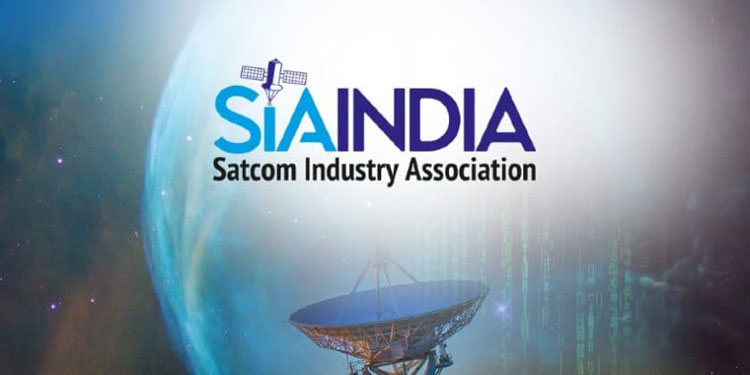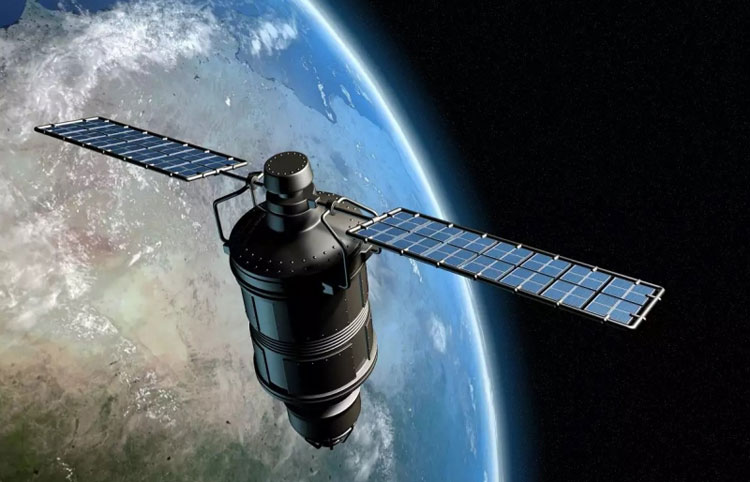INDIAN ARMED FORCES CHIEFS ON
OUR RELENTLESS AND FOCUSED PUBLISHING EFFORTS

SP Guide Publications puts forth a well compiled articulation of issues, pursuits and accomplishments of the Indian Army, over the years

I am confident that SP Guide Publications would continue to inform, inspire and influence.

My compliments to SP Guide Publications for informative and credible reportage on contemporary aerospace issues over the past six decades.
- Prime Minister witnesses 'Bharat Shakti' – a Tri-Services Firing and Manoeuvre Exercise in Pokhran, Rajasthan
- Interim Defence Budget 2024-25 — An Analysis
- Union Defence budget 2024
- Prime Minister Modi Commemorates Indian Navy Day in a Grand Ceremony
- Prime Minister Modi Flies in the LCA Tejas
- New Chapter in India-Italy Defence Ties
- Airpower beyond Boundaries
Real time satellite communication to track Covid-19 resources
SIA-India, a non-profit association has been created to represent the interests of the communication satellite ecosystem in India.

In an effort to enhance the pandemic management across the nation, the Satcom Industry Association of India wrote a letter to the Union Health Minister Harsh Vardhan, encouraging the use of real-time communication through satellites to track the essential supply chain of Covid-19 resources. In the letter sent earlier this month, the association stated that the current day scenario in the country makes it critical for Covid-19 patients to receive the supply of virtual medical advice, medicines and oxygen in time. The Satcom Industry Association of India (SIA-India) highlighted how space technology makes it possible to trace convoys and schedule alerts in the event of anomalies occurring, which further allows quicker response and better management.
“Satellite-based asset tracking system is unique, first for its ubiquitous coverage, second it digitises the entire supply chain with zero blind spots. The two-way communication helps keep the command and control glitch-free,” said Anil Prakash, Director General, SIA-India.
SIA-India is a non-profit association created to represent the interests of the communication satellite ecosystem in India. It represents satellite operators, satellite systems, launch vehicles and ground and terminal equipment manufacturers as well as application solutions providers to the Government, Regulators, Policymakers, and domestic and international standards bodies.
“Satellite-based asset tracking system is unique, first for its ubiquitous coverage, second it digitises the entire supply chain with zero blind spots. The two-way communication helps keep the command and control glitch-free,” said Anil Prakash, Director General, SIA-India.
The apex representative body was launched in a virtual event on March 30, 2021. “The industry association is formed by stalwarts who have come together to represent a unified voice for satellite communication industry in India,” the statement read.
“Over the last few years’ satellite communication have emerged, as the emerging technology, to address issues of providing connectivity to rural, remote and hilly areas in education, health, agriculture and business. It is heartening to see that new age companies and private organisations venturing into the business of satellite communication,” V.K. Saraswat, Member, NITI Aayog had remarked during the launch.
GLOBAL SATELLITE INDUSTRY GROWTH
According to a report recentlyreleased by Research and Markets, the global satellite industry is expected to reach $508 billion in 2024, at a CAGR (Compound Annual Growth Rate) of 6.51 per cent, for the duration spanning 2020-2024.
The report titled, Global Satellite Industry: Insights & Forecast with Potential Impact of COVID-19 (2020-2024) states that factors such as the growing number of active satellites, rising penetration of pay-TV, expanding coverage of 4G connectivity, increasing usage of the internet, and rapid urbanisation would drive the growth of the market. However, the growth will not be without any hurdles. The report points to the challenges that will come in the way of this growth due to the concerns over space debris, high cost of satellite hardware and components and stringent government regulations. A few notable trends may include, accelerating demand for satellite navigation equipment, increasing R&D spending on aerospace and defence, rising demand for earth observation imagery & analytics and emergence of integrated terrestrial-satellite connections.

With the growing demand for stronger digital connectivity, space activities by the governments all across the globe as well as private entities are also continuously on a considerable rise. The demand for high coverage satellite networks is coming from various end-use industries for a variety of applications including, military application, imagery, weather forecasting, science, and human exploration. Owing to such a wide set of applications, the number of satellite launches are rising, which is likely to help the satellite industry to grow globally.
“Over the last few years’ satellite communication have emerged to address issues of providing connectivity to rural, remote and hilly areas in education, health, agriculture and business,” V. K. Saraswat, Member, NITI Aayog had remarked.
Indian Space Research Organisation’s (ISRO) Director, K. Rathnakar K had also specified that in the recent times, tremendous advancements are being noted in technology and applications that demand a larger satellite capacity at affordable and competitive price. He also added, “Especially the high throughput satellites and NGSO systems would bring substantial capacity by effective utilisation of spectrum resources. The applications like direct-to-home broadband, communication on the moon, IFMC, IOT are expected to drive the SATCOM Sector. I believe, SIA-INDIA would play an importantrole to steer the SATCOM Industry in India with professional support. Ultimately the benefit should reach the common man at an affordable cost, which is the intent of the government too.”
The Global report had also mentioned Asia among the fast growing in the overall satellite industry owing to the increased activities of satellite manufacturing and launching. It also stated that the outbreak of COVID-19 would lead to the excessive use of digital connectivity and telecommunication networks, resulting in the launch of new satellites, which is likely to promote the growth of the global satellite industry. Given that, the launch of SIA could prove to be a timely and significant move.

Malcolm Johnson, Deputy Secretary General of International Telecommunication Union (ITU) has also stated SIA’s launch as an important development for the communication, satellite industry in India, coming at a time when an ever increasing number of satellites are being deployed around the world and an increasing demand for the valuable spectrum and orbital resources. “Satellite helps save lives in emergencies, provide critical knowledge about our planet and climate, and enable a range of solutions for digital, financial services, better health care and smarter cities. The satellite communications industry has a major role to play in using satellite to accelerate progress in these areas and all the other areas of the UN Sustainable Development Goals. Big opportunities lie ahead for the industry, including connecting the unconnected especially in rural areas. As we look to the future, collaboration will be vital across industries, regulators, governments, regional and international bodies, especially the ITU,” said Johnson.
Last month, SIA-India had also emphasised on the need for regulation and to streamline licensing framework for all satellite-based connectivity applications, in addition to the low-bit-rate applications, so as to unveil the complete potential of all satellite bands for Internet of Things (IoT) and Machine to Machine.
The global satellite industry is expected to reach $508 billion in 2024, at a CAGR (Compound Annual Growth Rate) of 6.51 per cent, for the duration spanning 2020-2024.
This was stressed while responding to consultation paper by Telecom Regulatory Authority of India (TRAI) on ‘licensing framework for satellite-based connectivity for low bit-rate applications’.
Satellite communication can provide coverage to the remotest and inaccessible areas of a geographically widespread country like India. The uniqueness and benefit of satellite technology cannot be under estimated. It can play an important role in enhancing crucial nationwide communication infrastructure. With the evolution of Satellite communication technologies, new types of applications based on low-bit-rate applications are emerging. Such applications require low cost, low power and small size terminals that can effectively perform the task of signal transfer with minimum loss, the consultation paper highlighted.
Prakash brought to light that the regulatory framework should be flexible enough to allow satellite service providers and end users to innovate, discover and create new satellite-based IoT and other applications delivered through low-or high-capacity satellite links.
SIA-India underlined the efficient use of satellites for agriculture and soil, renewable energy, environment, land, water, rural and urban development, power and electricity, transportation, industrial automation, oil and natural gas, military, health, education, amongst others areas. The regulatory framework will need to accommodate broadband IoT (Internet of Things) applications as each kind of orbit has its own advantages and disadvantages, it mentioned. SIA-India also pointed out how satellite-based connectivity has proven to be a cost-competitive and efficient alternative to the provision of broadband whether directly or by extending terrestrial networks especially in places that would otherwise be difficult or impossible to reach with terrestrial infrastructure.





